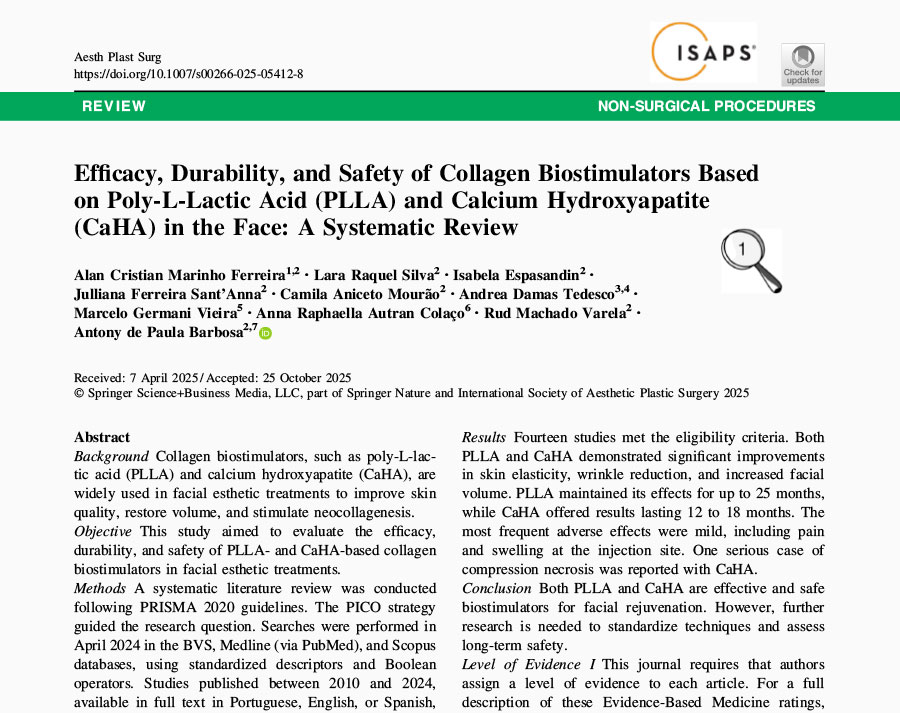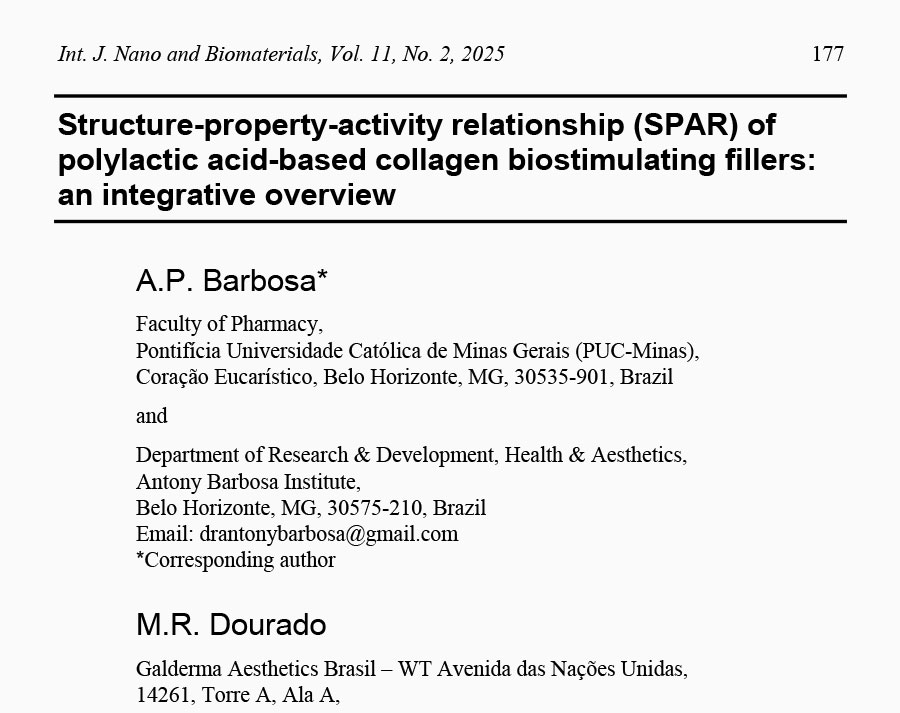Biocompatible polymers like polylactic acid (PLA) play a prominent role in biomedical applications due to their ability to stimulate collagen production via foreign body reactions (FBR). PLA is recognised for its synthesis from renewable, non-toxic sources and biodegradation into bioabsorbable lactic acid. This review explores the three main PLA isomers – poly-L-lactic acid (PLLA), poly-D-lactic acid (PDLA), and meso poly-D, L-lactic acid (PDLLA) – highlighting their distinct physicochemical properties, such as pH, charge, hydrophilicity, particle size, shape, and surface texture, which are crucial in initiating subclinical inflammation and activating fibroblasts for collagen production. Specifically, PLLA demonstrates superior collagen-stimulating potential with minimal inflammation, while PDLA and PDLLA exhibit variable inflammatory responses and collagen regeneration capacities. By evaluating structure-property-activity relationships (SPAR) among PLA variants, this review provides insights into optimising PLA-based biomaterials for enhanced collagen stimulation, guiding their application in regenerative medicine and aesthetic procedures.




